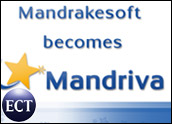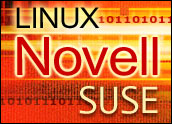
Users of Transaction Processing Facility (TPF), IBM’s mainframe operating system, seem to have both pride in the OS and an inferiority complex, often referring to it as “IBM’s unknown operating system.” Even IBM called it “little known” in a press release for its latest version of the system, z/TPF.
IBM in early October announced that it was taking a step toward bringing z/TPF to the attention of the next generation of IT workers. With a planned release date of September 30, 2005, z/TPF adds features such as 64-bit addressing capability on zSeries servers, but what is most significant is the system’s compatibility with Linux. This feature opens the door for many more programmers and administrators who may want to work with it.
25,000 Transactions Per Second
TPF is used mostly in high-transaction environments such as travel and banking and can process up to 25,000 transactions per second, according to IBM.
“It’s an industrial-strength workhorse,” Ira Witkin, program director of IBM Software Group, told LinuxInsider. The company has poured millions of dollars into the upgrade, which has been in the works for two years.
Written to handle airline bookings, it was originally named Airlines Control Package (ACP). IBM broadened its scope and renamed it TPF in 1979. The system’s ACP roots extend more than 40 years, longer than Unix’s, but the OS has hung around so long that it is now poised to take advantage of the latest trend in IT environments: consolidation.
“We’ve seen a return to centralization with larger complexes of computers centralized in one place or with one big computer,” Mike Kahn, managing director and analyst, The Clipper Group, told LinuxInsider. “Companies used to say ‘divide and conquer’ because it’s easier to scale by doing that. But when you’re processing transactions that require a lot of critical timing, it is easier if control is held by one system or a small number of systems.”
Need for Speed
The explosion of Web transactions and data collection has made TPF’s high-availability, high-transaction rate more appealing to a wider range of industries.
“With distributed environments, the ability to get a common view of customers with data dispersed throughout different systems has been difficult,” Witkin said. “With TPF opening up, there is the ability for people to connect into it more easily than before.”
With airline reservations, not only do travelers look online for a flight and price, they also want to reserve a seat, find out the airport’s security requirements and check for connections. In addition, each traveler is likely to perform several searches at several different Web sites. This means the online reservation systems must constantly pull data from several different places quickly to present a full picture to Web-browsing travelers, thousands of times a day.
Split-Seconds Count
Compatibility with Linux gives TPF a boost by allowing those working in an open-source environment to build their own applications for the OS. IBM wants to expand TPF’s user base and is targeting, in part, e-commerce merchants with distributed systems where a split-second per transaction can add up to too much customer wait time. Plugging systems running Linux into the mainframe TPF environment shortens the path to data into an almost memory-to-memory transaction instead of one that has to process through the network.
“Everybody’s trying to figure out the best way to process large volumes of transactions, in the millions per hour,” the Clipper Group’s Kahn said.
The U.S. Federal Reserve projects that by 2007, 14.4 percent of payments will be made by debit card. Kahn said that a delay of a millionth of a second can become significant over millions of transactions. “z/TPF is going to be a competitive offering,” he said, but it’s not the only system in the game. BEA Tuxedo and Hewlett-Packard’s NonStop are among the z/TPF’s direct competitors.
IBM has been feeling the pressure from those and other competing systems, and the proliferation of Linux in data centers meant they needed to tap into that skill set if it wanted to broaden TPF’s user base.
Keeping Up
In July 2003, a Gartner Research report used the Sabre reservation system’s move from TPF to HP NonStop as a case study to conclude that, “there is no technical reason why TPF systems cannot be gracefully retired.” The report went on to recommend that TPF users seriously consider the switch to NonStop.
Meanwhile, however, VisaNet, the world’s leading payment processing system, still uses TPF to process all its transactions. In July, the system underwent its annual, pre-holiday stress test and reported it can sustain a processing level of more than 6,000 transactions per second. Visa U.S.A. said in a press release that it assumed a 20 percent increase in transaction volume over last season. Bank of America, Citibank and the Chicago Board Options Exchange are among other financial institutions that employ TPF.
Other vertical industries that are pressing the need for transaction speed include telecommunications, where the popularity of text-messaging is growing; and financial institutions, where online banking, securities trading and other transactions combined with the need for security, put a high demand on data centers.
IBM is also touting the OS’s low cost per transaction. Witkin said that TPF has become more cost-effective as the price of hardware has dropped, especially for high-transaction-rate shops.




















































